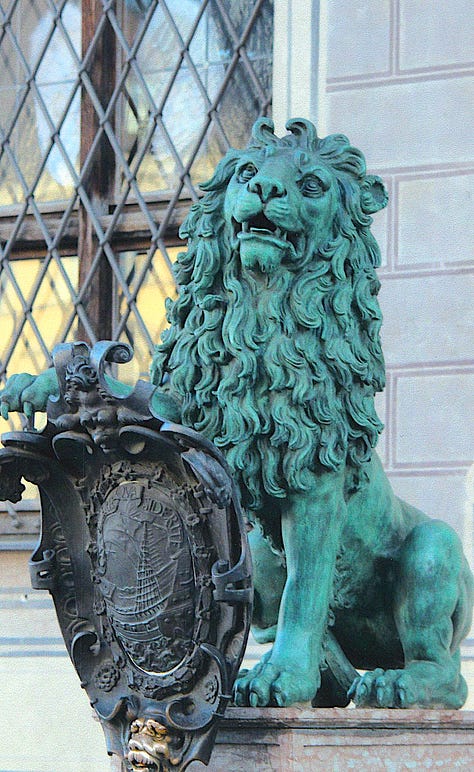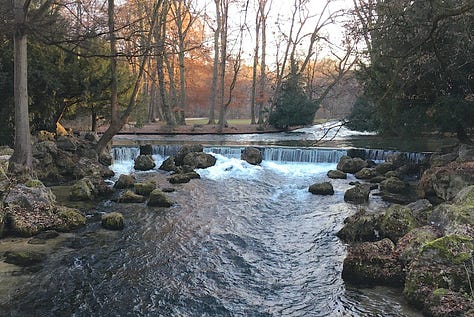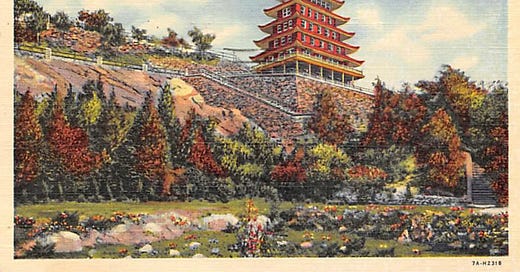The Unexpected Joy of Postcards: A Genealogist’s Journey Through Postcrossing
How a simple postcard can create connections, unlock family history, and bring unexpected joy
A Journey That Began With a Flashcard
I didn’t know it at the time, but my love for postcards—and maybe even genealogy—started in fourth grade, sitting on a little carpet remnant in a Catholic school classroom.
Every week, Sister Stephen Disselkamp, OSU, would gather us into a semi-circle and pull out a new set of country flashcards. These weren’t the standard textbook variety. Each 10” x 14” card had a black-and-white photograph of something unique to the country—a person in traditional dress, a local market, a famous landmark. On the back, key facts: population, language, capital city, literacy rate, and a tiny map showing where it was in the world.
She’d ring a little bell, and we’d pass our cards to the next student, absorbing a new place with each rotation. It was simple, but I loved it. I think that’s when my curiosity about the wider world took root.
By high school, I was fully immersed in that curiosity. I joined Model UN, where we didn’t just research countries—we became them. Every year, we were assigned a nation, and for a weekend, we dressed in its traditional clothing, debated world issues from its perspective, and proudly showcased its culture. This, too, was guided by an Ursuline nun—Sister Mary Michelle Duvall, OSU—who helped us see the world as more than just a place on a map.
Looking back, I realize how formative the Ursulines were in shaping my worldview. The Ursulines have long emphasized education, cultural exchange, and global awareness, which may explain why so many of my teachers encouraged international perspectives. Founded in 1535 by St. Angela Merici in Brescia, Italy, the Ursulines were among the first Catholic women’s religious orders dedicated to education. Over the centuries, they established schools around the world, fostering curiosity about other cultures and instilling a deep appreciation for learning. Their influence undoubtedly shaped the way I see history, genealogy, and human connection today.
That global mindset never left me. Even as an adult, I find myself looking beyond American media, tuning into DW (Germany), BBC & The Guardian (UK), France24 (France), CBC (Canada), and The National (Scotland) for different perspectives. I even took part in a Rotary International Group Study Exchange to Germany, living in German households for a month and fully immersing myself in their way of life. Travel became an extension of my curiosity.
Then, years later, I stumbled across Postcrossing—and it felt like everything had come full circle.
Postcrossing as a Window to the World
If you’ve never heard of Postcrossing, here’s the gist: You send a postcard to a random person somewhere in the world, and in return, you get one from another stranger. Simple, right? But in practice, it’s so much more.
Each postcard is a little time capsule, a glimpse into someone else’s life. Some people share what they did that day. Others write about their country’s traditions, favorite books, or a local historical event. Every now and then, I receive one with a deeply personal story—a childhood memory, a wish for the future, a philosophical thought scribbled in the margins.
For me, Postcrossing isn’t just about sending and receiving postcards. It’s about connection. It’s about bridging the distance between strangers, just as genealogy bridges the past with the present. And there’s something undeniably magical about the serendipity of it. In a world where so much of our communication is instant and digital, receiving a handwritten postcard from an unexpected place feels like a small, joyful surprise. It reminds me that there are still ways to experience the world beyond a screen—ways that are tangible, personal, and deeply human.
A Family Tradition of Postcards
Turns out, sending postcards runs in my family.
A few years ago, while sorting through the attic of my parents' home, I found an old suitcase stuffed with postcards. They were all addressed to my great-grandmother, Florence Christine McMillen Bailey, sent from relatives all over the country.
Florence was one of 17 siblings, and many of them worked for the railroads. Because of that, my extended McMillen family ended up scattered across the country—Salt Lake City, Utah; Pocatello, Idaho; Los Angeles, California; Reading, Pennsylvania; Louisville, Kentucky; Hammond, Indiana, and beyond.
Yet, they stayed in touch the same way I do today—through postcards.
Some were simple “thinking of you” messages. Others shared milestones—a new job, a baby, a move to a new city. Each card was a tiny thread in the fabric of their relationships, a way of staying connected across distance and time.
I digitized the entire collection and, in a full-circle moment, tracked down descendants of some of the people who had sent them. There’s something incredibly moving about handing a distant cousin a digital copy of a postcard their ancestor sent 80-90 years ago—a message that was never meant for them but now feels like a personal inheritance.
Postcards as a Genealogical Resource
We don’t often think of postcards as genealogical records, but they are. They tell stories in ways that census records and birth certificates never could. Here’s why they matter:
They capture a moment in time. Old postcards show how a place looked decades ago, offering a window into your ancestors’ world.
They contain handwritten messages. A postcard from an ancestor isn’t just an artifact—it’s their actual handwriting, their words, their thoughts.
They document movement. Postcards can help track family members who traveled or moved. A postmark from an unexpected location might hint at a missing puzzle piece.
They preserve local history. Many towns—especially small ones—produced postcards featuring businesses, landmarks, and events. These are often overlooked historical records.
For genealogists, tracking down postcards from ancestral locations can be a fascinating project. Whether through antique shops, online auctions, or family collections, they offer unique glimpses into the past.
From Collector to Creator
Beyond collecting, I’ve also taken a step further by creating my own postcards. I’ve turned photographs I’ve taken into professional-quality postcards, sending them to strangers through Postcrossing. In a way, it feels like contributing to a future archive—one that, decades from now, might be stumbled upon by someone piecing together their own family’s past.
I’ve also found Postcrossing to be incredibly beneficial for my mental health. There’s something special about both reaching out to someone and, in return, receiving a surprise postcard from a complete stranger. As someone caring for a parent with dementia—a role I’ve sometimes heard described as being like living in a cloister—these small, serendipitous moments bring me real joy. The simple act of opening the mailbox to find a postcard from an unexpected corner of the world reminds me that connection exists beyond the boundaries of caregiving, offering me glimpses of life beyond my daily routine.



Bridging the Past & Present
Postcrossing, much like genealogy, is about connection—reaching across time and distance to say, I see you. I’m thinking of you.
My great-grandmother once received postcards from her far-flung siblings. Decades later, I find myself sending postcards to strangers all over the world. It’s the same impulse—the desire to share a small piece of life, to leave a tangible record that whispers, I was here.
For those who love family history, I encourage you to see postcards not just as collectibles, but as stories waiting to be told. Each one is a personal artifact, a tiny slice of history carrying a unique voice. Whether it’s a vintage postcard tucked away in an attic, a handwritten note from a loved one, or a message sent to a stranger across the world, postcards connect us in ways both big and small.
They remind us that history isn’t just about dates and documents—it’s about people, their journeys, and the moments they chose to share. Whether through old postcards, heartfelt notes, or modern-day exchanges, these little paper treasures bridge generations, cultures, and time itself.
Closing Thought:
Have you ever found an old family postcard or used Postcrossing (or something similar) to connect with history? I’d love to hear your story! If you’ve never tried it, maybe now is the time—send a postcard, start a new tradition, and see where it takes you.






What a great article! I 'vee been a member of Postcrossing since 2014, and I save every single one I receive. I love sending postcards and letters through the mail. I do have a few postcards that were sent to my grandparents. Those are precious.
So interesting! I've been involved in PostCrossing since the beginning of the year and have found it interesting. I had a woman in Germany who lives 2 hours from where my ancestors lived. I've just sent postcards of my town that I had printed from a photo I took. The only problem with that is I have to order so many. Do you just print out your postcards? I worry they might not make it to the other side of the world in one piece! When I was young I had several penpals from all over the world. I liked the letter format because I was able to find out more about them. But there is something special about postcards. I've started to send them to friends when we go on vacation. Just a way of letting them know I'm thinking about them. Thanks for the post.